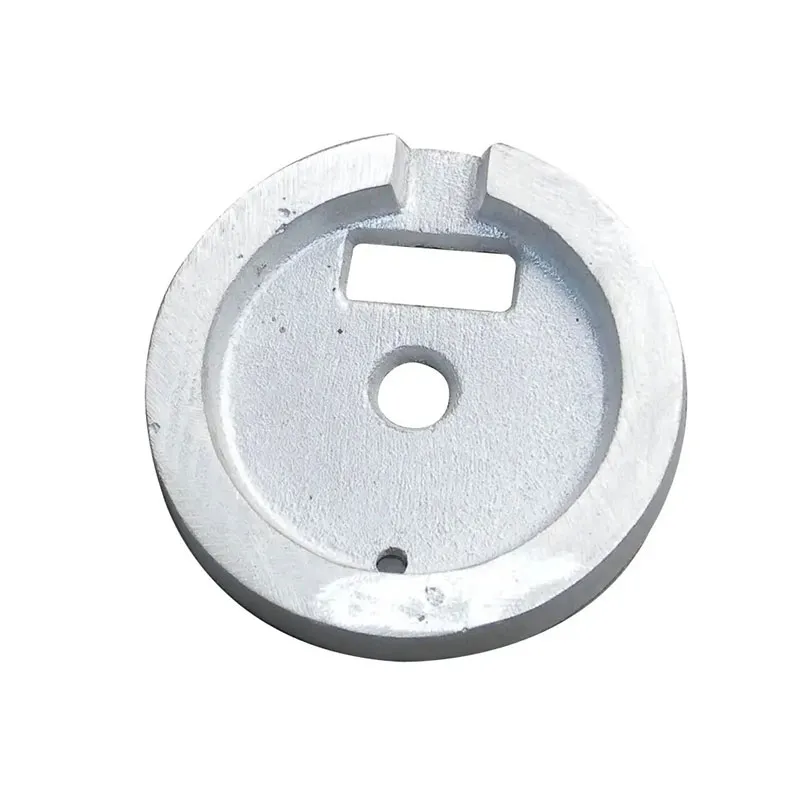Understanding the Role of Green Sand in Metal Casting Processes and Techniques
Green Sand in Casting An Overview
Casting is an essential process in metallurgy and manufacturing, employed to create complex shapes and components by pouring molten metal into a mold. One of the most widely used mold materials in casting processes is green sand. This article delves into the characteristics, advantages, and applications of green sand in casting, exploring why it remains a popular choice in foundries around the world.
What is Green Sand?
Green sand is a mixture primarily composed of silica sand, clay, and water. The term green refers to the fact that the sand is used in a moist state, which enables it to maintain its shape and provide adequate cavity support during the casting process. The two most common types of clay used in green sand are bentonite and kaolin, with bentonite being more prevalent due to its superior binding properties.
The composition of green sand can vary depending on the specific requirements of the casting project; however, a typical formulation includes approximately
- 90% silica sand - 5% clay - 5% water
Characteristics and Properties
Green sand boasts several characteristics that make it ideal for foundry applications. Firstly, it is highly moldable, allowing for the creation of intricate designs and smooth surfaces. The moisture content in green sand aids in forming a strong mold that can withstand the thermal stresses of molten metal. Additionally, the clay particles within the sand create a cohesive mass that retains its shape, preventing defects in the final cast.
Another critical property of green sand is its ability to be reused. After a casting cycle, the sand can be reclaimed, cleaned, and mixed with fresh materials to produce new molds. This recyclability not only lowers production costs but also contributes to sustainable practices within foundries.
Advantages of Green Sand Casting
The advantages of green sand casting are manifold. One of the most significant benefits is its cost-effectiveness. The materials used in green sand are relatively inexpensive and widely available, making this method economically viable for both small-scale and large-scale production.
green sand in casting

Moreover, green sand casting allows for rapid production times. The process is straightforward and efficient, enabling quick turnaround times without the extensive setup required by other casting methods such as investment casting or die casting. This speed is particularly advantageous in industries that demand high volumes of components within tight deadlines.
Green sand also provides excellent thermal conductivity, which aids in the proper cooling of the molten metal, ultimately resulting in a refined surface finish and improved mechanical properties in the final product.
Applications of Green Sand Casting
Green sand casting is predominantly employed in various industries, including automotive, aerospace, and machinery. Some of the most common components produced via this method include engine blocks, cylinder heads, and gears. Given its versatility, green sand casting can also accommodate a wide array of metals, including iron, aluminum, and bronze.
Another notable application of green sand is in art and sculpture casting. Artists and sculptors often utilize green sand molds for creating intricate designs, benefiting from the material’s detail retention and smoothness.
Challenges and Considerations
Despite its numerous advantages, green sand casting is not without challenges. One of the primary concerns is the control of moisture content; too much water can lead to mold collapse, while too little can result in poor casting quality. Foundries must carefully monitor and adjust their sand mixtures to ensure optimal performance.
Moreover, the environmental impact of green sand must be considered. While recyclability is a key benefit, the initial extraction and processing of silica sand can have ecological implications. Foundries are increasingly exploring alternative materials and methods to mitigate these concerns.
Conclusion
In conclusion, green sand remains a staple in the casting industry due to its unique properties, cost-effectiveness, and versatility. As manufacturing demands grow and industries evolve, innovations in green sand formulation and handling techniques will likely enhance its applications and sustainability. Green sand casting’s blend of tradition and adaptability indicates its relevance in the future of metal casting, ensuring it continues to play a pivotal role in the creation of countless components essential to modern engineering.
-
Custom Steel Sand Casting Services Precision & Durability GuaranteedNewsApr.29,2025
-
Arise Precision Casting Custom Metal Casting Solutions & ServicesNewsApr.29,2025
-
Sand Casting Guide Definition, Process & High-Quality Sand SuppliesNewsApr.28,2025
-
Premium Alloy Die Casting Manufacturer Aluminium & Zinc SolutionsNewsApr.28,2025
-
Precision Aluminum Die Casting Custom Solutions & Fast TurnaroundNewsApr.27,2025
-
Precision Complex Sand Casting Solutions Durable & Custom DesignsNewsApr.27,2025















